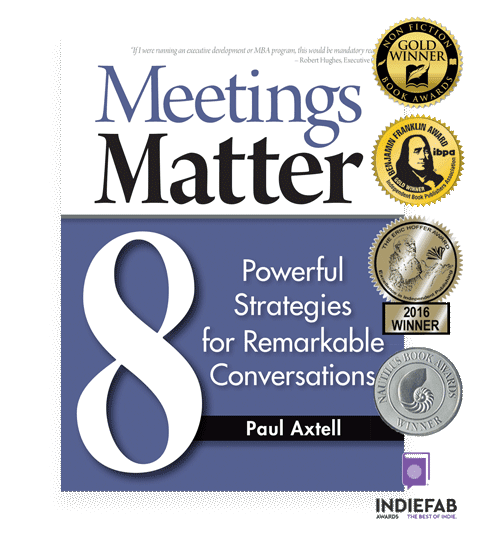An Agreement About Distraction
Distraction is a big issue these days. Too many of us sit in meetings with a room full of people consulting laptops, smartphones, or other devices, and this trend needs to be stopped cold in its tracks.
As a constant advocate for awareness, presence, and focus, I’ve been fighting the pull of technology both personally and in the classes I teach. I get it that technology is addictive. It takes everything I’ve got to put my smartphone in the back seat when I’m driving. Every commercial on TV is an opportunity to check e-mail.
Yet I know it’s not productive to jump back and forth with my attention between two things. Distractions are especially harmful to meetings—and multitasking is a distraction both to the person doing it and to the other people in the group.
If you’re leading a meeting, here is how you might express an agreement about distraction in the setup for your meeting:
I want you to take care of yourselves, and within that agreement, you certainly have my permission to leave the room at any time to check on your family or critical projects. I realize you may have calls you are waiting for or projects you are tracking. Do what you need to do to feel you have that handled. Please use your judgment and look out for yourself. You can also get up at any time to get coffee, stretch, use the restroom.
That said, I would love your full attention when we are in the meeting so we can really focus the conversation. So check your electronics at the door. I ask this for two reasons: First, because they are distracting to me and to others. Second, because your attention and listening matter to me, to others in the room, and to the quality of our work together.
If you want to put your phone on vibrate, not a problem, unless it vibrates every five minutes. Exceptions are fine; patterns are troublesome. Also, if you want to take notes or use your tablet to refer to background information on our topics, by all means do so. I just ask that you resist the urge to check e-mail or world news. Deal? Thank you.
“The research is almost unanimous, which is very rare in social science, and it says that people who chronically multitask show an enormous range of deficits,” explains Clifford Nass, coauthor of a Stanford study on multitasking. “They’re basically terrible at all sorts of cognitive tasks—including multitasking.”
Multitasking has no place in meetings. You may think you are able to follow a conversation as you do something else. But your mind does not actually hear and think two things at the same time. It simply switches back and forth very fast. The moment you look at your smartphone and read that text, you miss what is said in the meeting.
The harm in multitasking is twofold. First, your attention matters to everyone else in the room—especially to the person speaking. Speaking to a group that is not paying attention is distracting at the least and hurtful at worst. People identify with their own speaking, so if you aren’t paying attention to what they say, you send the message that you’re not paying attention to them as a person.
Second, if you’re multitasking, you miss the subtleties in what people say and the nonverbal cues in how they say it. You may be able to keep up with the gist of their words, but you will likely miss most of what they are actually saying.
I know I’m fighting uphill here. A colleague was discussing guidelines for a group’s virtual meetings when someone suggested that everyone agree not to work on their computers during the conference call. One supervisor objected because he thought it would interfere with the productivity of some of his people who were exceptional at multitasking!
But in reality only about 2 percent of people are any good at multitasking. “People can’t multitask very well, and when people say they can, they’re deluding themselves,” argued MIT neuroscientist Earl Miller in a National Public Radio interview. “The brain is very good at deluding itself.”
So don’t delude yourself. Be fully present in every meeting—fully focused on the conversation at hand.




















































